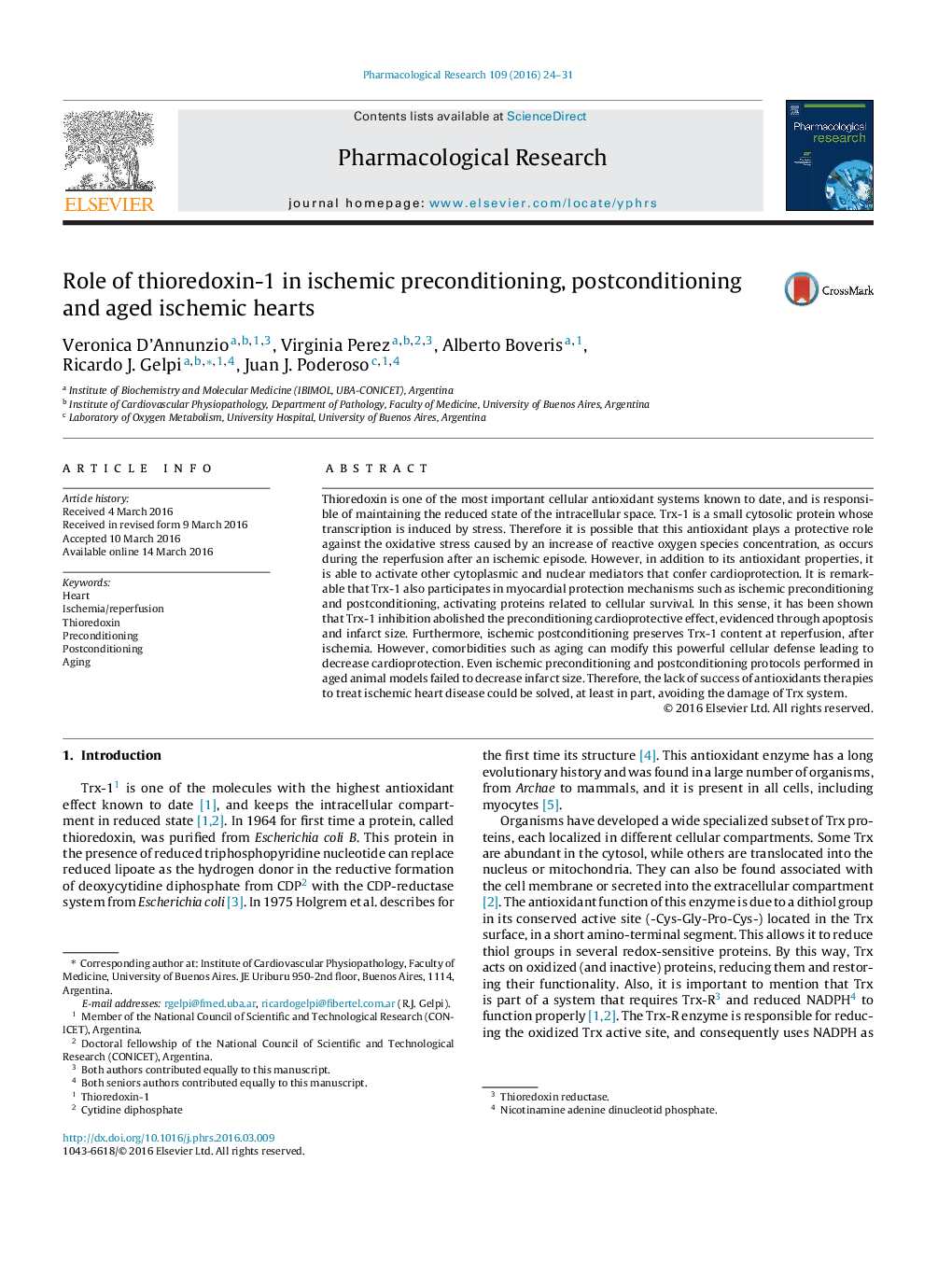| Article ID | Journal | Published Year | Pages | File Type |
|---|---|---|---|---|
| 2562704 | Pharmacological Research | 2016 | 8 Pages |
Thioredoxin is one of the most important cellular antioxidant systems known to date, and is responsible of maintaining the reduced state of the intracellular space. Trx-1 is a small cytosolic protein whose transcription is induced by stress. Therefore it is possible that this antioxidant plays a protective role against the oxidative stress caused by an increase of reactive oxygen species concentration, as occurs during the reperfusion after an ischemic episode. However, in addition to its antioxidant properties, it is able to activate other cytoplasmic and nuclear mediators that confer cardioprotection. It is remarkable that Trx-1 also participates in myocardial protection mechanisms such as ischemic preconditioning and postconditioning, activating proteins related to cellular survival. In this sense, it has been shown that Trx-1 inhibition abolished the preconditioning cardioprotective effect, evidenced through apoptosis and infarct size. Furthermore, ischemic postconditioning preserves Trx-1 content at reperfusion, after ischemia. However, comorbidities such as aging can modify this powerful cellular defense leading to decrease cardioprotection. Even ischemic preconditioning and postconditioning protocols performed in aged animal models failed to decrease infarct size. Therefore, the lack of success of antioxidants therapies to treat ischemic heart disease could be solved, at least in part, avoiding the damage of Trx system.
Graphical abstractScheme that represents cardioprotection conferred by thioredoxin over-expression in young, middle-aged and old mice. ROS: reactive oxygen species; RNS: reactive nitrogen species. Trx-1: Thioredoxin-1.Figure optionsDownload full-size imageDownload high-quality image (92 K)Download as PowerPoint slide
